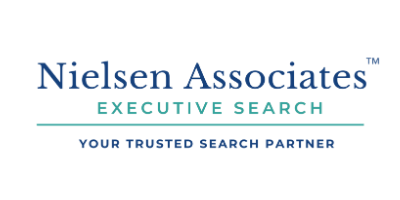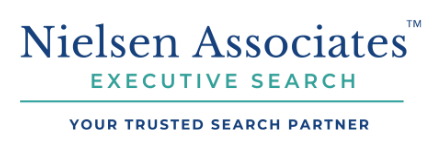8 Ways to Enhance Recruiting
Every company is unique; so there's no 'one-sized-fits-all' approach. But these strategies deliver results.

#1 | Hone your culture & employer brand.
Get crystal clear on your culture; and be devoted to nurturing it every day. Start by asking yourself culture questions from the candidate’s point of view. What’s it really like to work here? This seems like a simple question, but you should cover all bases when discussing opportunities with potential hires:
- company culture
- compensation and earning opportunities
- health and time-off benefits packages
- wellness programs
- flexible work arrangements
- caregiver and childcare benefits
- perks, partnerships, and discounts
- internal mobility, stability, recognition, career development and performance management
- goals, mission, vision, and values, and why they are important to your success
Make it future-proof.
Ask yourself what’s constant about your company culture, regardless of location.
As teams become remote, company culture is less about location-specific amenities, and more an indicator of the values, philosophies, and management strategies
at your company.
Showcase company culture with targeted presentations during recruiting, so that who you are and what you have to offer resonates with the talent who you want to attract. What’s important to the candidates you want to hire? Why would they want to work here? For example, with millennial candidates, you might highlight that you offer career development or mentoring. To appeal to females, you might showcase key contributions made by women on your leadership team.
#2 | Put engagement and retention at the center of everything.
Design everything so your team knows they work for a company where their career goals matter; their voice matters; and there are resources dedicated to their professional growth and mobility. Nurture career growth during all phases of employee tenure. Begin with formal onboarding programs that help new hires assimilate quickly. Put ongoing engagement strategies in place that give employees a sense of ownership of their work, and recognize and reward a job well done. And offer professional career development and leadership continuity programs to prepare your team for increases in responsibility and compensation.
70%
of employees with a structured onboarding program remain at a company for at least 3 years.
#3 | Invest in your recruiters.
Immerse in-house recruiters in relevant industry trends and recruiting technologies by offering continuous professional development. Go for a blend that includes training and education, professional certifications, memberships and affiliations, and professional networking groups. Form strong connections with external recruiting agencies like
Nielsen Associates for additional perspectives, industry expertise, and to expand your network of talent.
#4 | Always be agile
Agility doesn't have to be a "drop-everything-and-react" experience. Take a more predictive approach by anticipating seasonal spikes in demand, market conditions, and internal changes in resource allocation and headcount. Optimize recruiting channels that yield the best results by comparing key metrics such as cost, quality, and time to hire. Partner with recruiting firms when you need to move fast, conduct a confidential search, or when there’s a challenging position that’s hard to fill without an internal successor.
#5 | Focus on skillsets.
Hire core skills that are not industry-specific; but are important to the success of your company today and in the future; such as emotional intelligence, communication skills, integrity, relationship management, and agility. Keep the focus on transferable skills, comparable experience, and trainability.
Unlike technical skills or industry knowledge (which can be trained), transferable skills are competencies that show someone’s versatility, adaptability, growth potential and leadership ability.
#6 | Keep stakeholders engaged.
Brush away the fears of pestering people, because everyone likes to be informed. Keep all stakeholders involved with regular, frequent communication. Share news, get feedback and ask for input. Ask yourself if your communication strategy needs to be more inclusive. Do you really have the right stakeholders? Who will interface with the new team member and work closely with them? Getting a 360 degree view (especially during requirements gathering and job design) will help you identify the skills and traits required to exceed performance expectations and strengthen the team.
#7 | Harness the power of technology.
What's missing from your recruiting technology suite? For example, AI-powered tools to help you design inclusive, gender-neutral job descriptions. And pre-employment assessments help you make data-driven, bias-free decisions, prior to in-depth interviews. Partner with IT colleagues and explore solutions together.
# 8 | Adopt inclusive recruiting strategies.
Make sure everyone at your company who is directly involved in hiring is educated on diversity and inclusion. This includes not only HR and recruiters - but executives, hiring managers, and key collaborators during the hiring process. They should know how to detect hiring bias and have the tools and resources to correct it. Whenever there's an opening, widen your search parameters, and assemble diverse screening panels to get many perspectives when making hiring decisions.
What's in your tech stack?
Tools like Textio use AI to help you create inclusive, gender-neutral job descriptions by identifying masculine words (eg. “ambitious” and “challenging”) and feminine words (eg. “collaborative” and “support.”) This is especially important for diversity and inclusion strategies in industries that are traditionally male-dominated, such as tech and science.
Harver offers a suite of automated solutions that help organizations engage, hire, and develop the right talent in a fast and fundamentally less biased way. They offer pre-assessments, video interviews, and reference checking services.
Amplify your Recruiting Strategy with Nielsen Associates
For over 20 years, Nielsen Associates has built, developed and nurtured a network of talented professionals and business leaders. We can quickly present the most progressive, capable, trustworthy candidates in the Human Resources, Marketing, and Finance industries. Request a free consultation with our team of specialized recruiters to learn more about our services.












